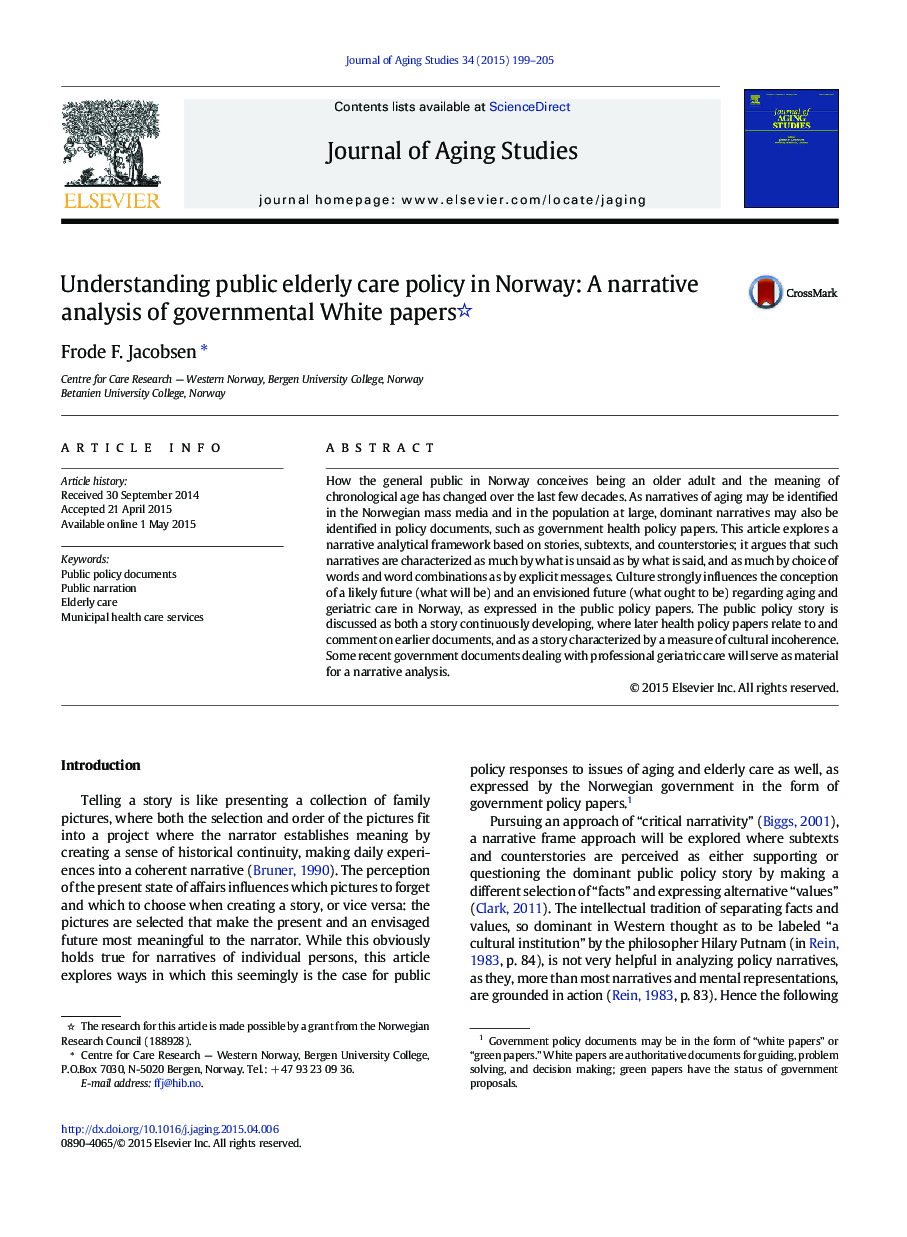| Article ID | Journal | Published Year | Pages | File Type |
|---|---|---|---|---|
| 1081785 | Journal of Aging Studies | 2015 | 7 Pages |
•A main story on aging and elderly care with subtexts and counterstory is identified.•Subtexts create continuity and changes, counterstory influences main story.•The public policy narrative is profoundly cultural with clear normative dimensions.•The narrative is characterized as much by what is absent as to what is highlighted.•Mutually exclusive or incoherent ‘cultural models’ are part of the same story.
How the general public in Norway conceives being an older adult and the meaning of chronological age has changed over the last few decades. As narratives of aging may be identified in the Norwegian mass media and in the population at large, dominant narratives may also be identified in policy documents, such as government health policy papers. This article explores a narrative analytical framework based on stories, subtexts, and counterstories; it argues that such narratives are characterized as much by what is unsaid as by what is said, and as much by choice of words and word combinations as by explicit messages. Culture strongly influences the conception of a likely future (what will be) and an envisioned future (what ought to be) regarding aging and geriatric care in Norway, as expressed in the public policy papers. The public policy story is discussed as both a story continuously developing, where later health policy papers relate to and comment on earlier documents, and as a story characterized by a measure of cultural incoherence. Some recent government documents dealing with professional geriatric care will serve as material for a narrative analysis.
